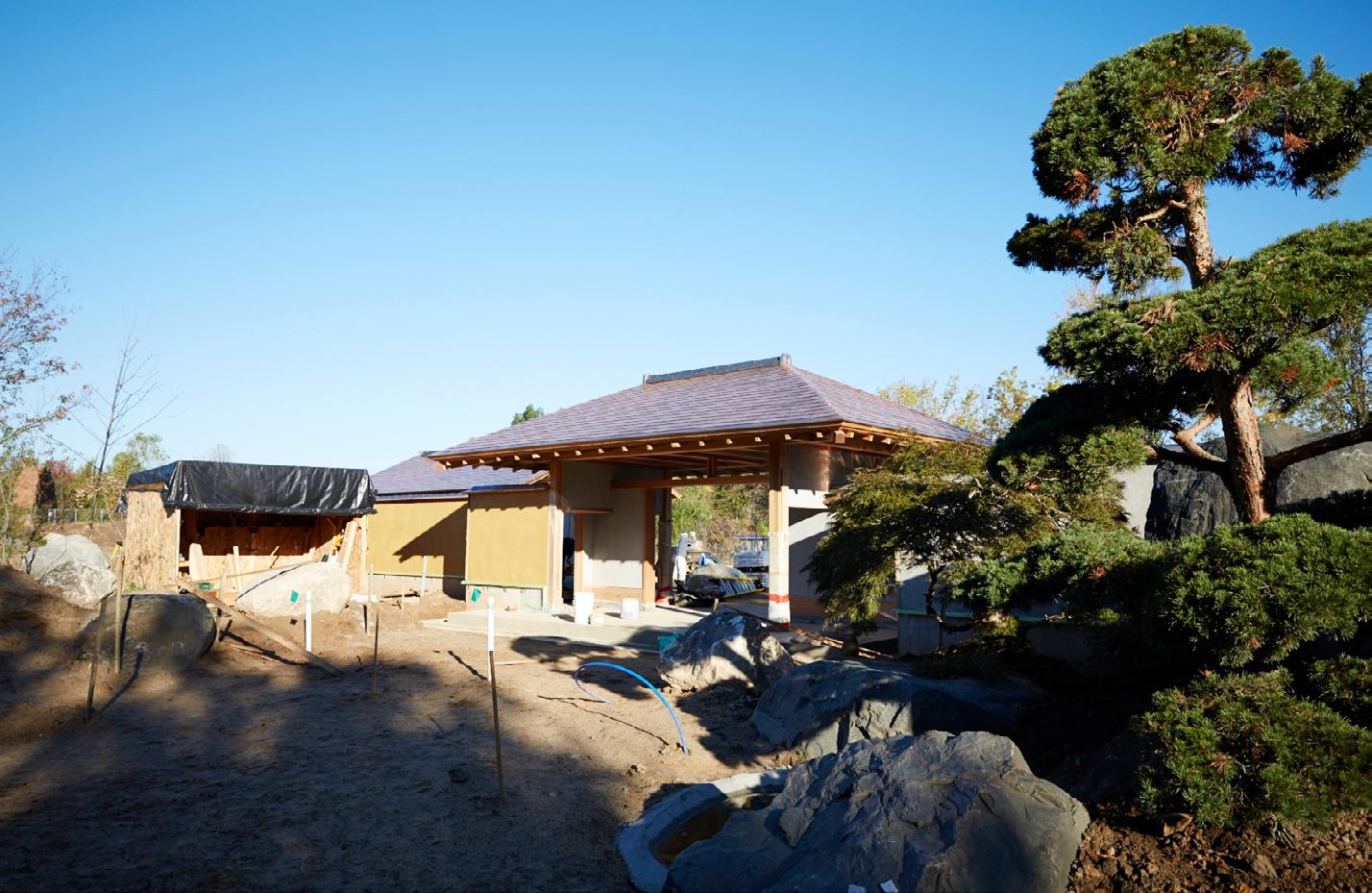
3 minute read
The Journey Continues...
THE JOURNEY CONTINUES...
Five years have passed since the opening of The Richard & Helen DeVos Japanese Garden. Over a million guests have experienced the seasonal beauty of this space. In addition to normal daily visits, weddings, special dinners and private events have occurred here. It is a garden embraced by community near and far as a place for reverence, reflection, contemplation and beauty. Like all gardens, this garden is constantly changing. This change often feels slow in the moment and fleeting in hindsight. Through steady learning, seasonal care, and consistent maintenance, the original vision of garden designer Hoichi Kurisu remains. Five years later, the journey continues…
Advertisement
Plants were originally chosen to express the beauty of seasonal changes. Japanese gardens do not rely on bright perennial flowers or bold annual plantings for their beauty; the focus is instead on the essence of trees, the line of a trunk, the forms of shrubs and the unique textures of moss and stone. The beauty of cyclical change within this garden is truly noteworthy and has been wonderful to watch and better understand. This regular cadence of seasonal bloom and evolving color moves through the garden in ephemeral change. The cherry blossoms are not the earliest flowers in the garden; that title is left to the pussy willow and witch hazel. However, cherry blossoms are the most prominent bloom of the year. This highly anticipated event typically occurs in late April, after weeks of regularly checking the trees and estimating when full bloom will occur. The many serviceberry trees planted throughout the gardens are timed perfectly with the purple rhododendrons for the next wave of color and flowering. The iris and water lilies then provide an early summer display that highlights the zig-zag bridge and shoreline. This ebb and flow of seasonal color dances around the garden throughout the growing seasons, culminating with the familiar beauty of changing leaves in the fall.
The care and upkeep of our Japanese Garden has been a journey of learning and seasonal priorities. The horticulture staff and volunteers have been challenged by new spaces and new ideas. It is rare that the natural landscape is perfectly symmetrical, and this influences the way plants are pruned and maintained. Trees are pruned to lean out over the water or maintained to create a hide and seek intimacy. Guests do not see the entire garden at once. An architectural element, waterfall or view of the garden may be revealed and then hidden from view, only to reappear later, creating a new sense of discovery with each season. This is especially noteworthy as it relates to the “garden trees”, or niwaki, in Japanese. Niwaki is also a descriptive word for highly pruned or sculpted trees. These trees help to create the structure of the garden and are sometimes reminiscent of large bonsai planted in the ground. Staff will move through and prune an area, completely transforming the way a space feels. It is a balance between nature and the hand of the gardener.
Our Japanese Garden is unique, of course, but it is firmly based in centuries-old design concepts and traditions. Changes in elevations, water forms, bridges and other structures, stone, boulders and pathways provide the visible (and sometimes invisible) form that is the backbone of the garden. The past five years have seen a number of significant stone and boulder additions to address the way that guests flow though the moss garden or to fix erosion along a pathway. It has been interesting to see how these modern challenges are tackled through the lens of traditional garden style.
The professional staff has had the opportunity to network with other Japanese gardens around the United States by participating in NAJGA, The National Association of Japanese Gardens. This past summer, we hosted several gardeners from the Portland Japanese Garden for a week-long work exchange and another team from the Aesthetic Pruners Association spent a week working side by side with our staff, pruning and detailing several important areas.
The Richard & Helen DeVos Japanese Garden has been enjoyed and appreciated by so many people in the last five years. This is only the beginning. This garden provides a foundational opportunity for education, enjoyment and healing. A commitment to stewardship, vision, knowledge and continued education are just a few of the skills needed to successfully care for these important spaces as our journey continues.
Essay by Steve LaWarre, Director of Horticulture

The journey continues in The Richard & Helen DeVos Japanese Garden. Main Gate pictured in October 2013 while under construction.

The journey continues in The Richard & Helen DeVos Japanese Garden. Main Gate, June 2020.
Kirstin Volkening









